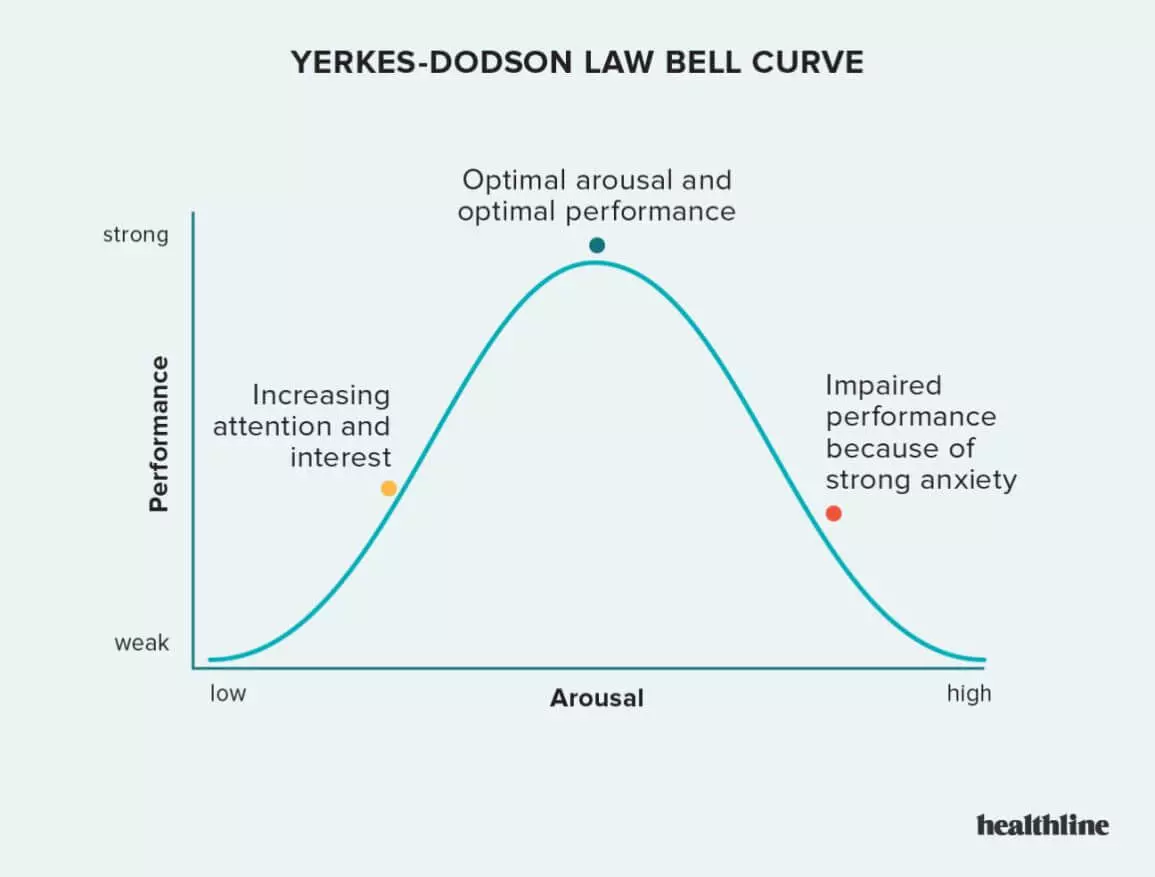Comments
- No comments found

Failing can be less a function of the market and more about human nature.
Have you ever heard of the Yerkes-Dodson Law? Neither have I.
However, in today's performance-driven world, it might be one of the most important laws of innovation and productivity. The Yerkes-Dodson Law states that there is a relationship between performance and arousal. In other words, an increase arousal can help improve performance—but only up to a certain point. Now here is a key point: at some level of arousal—when it becomes excessive—performance will diminish.

Source: Healthline
The paper was published in 1908 where rats were given mild electric shocks to motivate them to navigate a maze in an attempt to optimize performance. As illustrated in the graphic, performance clearly had a zone where added arousal improved performance. However, it also resulted in a "performance inflection point" where gains were decreased. Of course, the extrapolation from rats to humans may be a stretch. But conceptually, the application of this principle in the maze-like world of business and innovation can apply.
In theory, there appears to be a threshold or inflection point where small changes in arousal can result in dramatic changes in performance and it happens fast. And that leads us to today's tactic to drive growth and innovation: fail fast.
So, failing by design allows us to "market test" an idea and respond directly to the voice of the marketplace. But the Yerkes-Dodson Law informs us that failure can also come from internal forces and pressures to drive success. So, the push to fail might really reflect an internal failure as employees are shifted to the right on the curve and performance declines.
Innovation rock star Elon Musk has been recently sited as pushing himself to the point of exhaustion. And in this context, Musk has been blamed for hurting Tesla with his bizarre behavior. It seems that Musk might be driving himself over the top of the performance curve, finding himself driven, but with less functional capacity to achieve his lofty goals. Performance—of Musk and of Tesla—can be directly impacted even with the best technology and planning. The problem is a very human one.
As businesses ride the exponential curve of innovation, avoiding the risk of obsolescence is one of leaderships' top concerns. And that concern can fuel the pressure for individual performance. The construct of failing fast is generally considered a test of market viability. But the failure may also be due to human causes. The pressure to perform can push people to the point where viable ideas and technologies are compromised. The process of innovation (and the tactic of fail fast) must take into consideration where people are on the Yerkes-Dodson curve and how motivation and arousal can directly impact performance. Striking the balance between motivation and capabilities is essential. After all, driving innovation and performance might just be a bit like the Goldilocks principle—not too hot, not too cold, but just right.
John is the #1 global influencer in digital health and generally regarded as one of the top global strategic and creative thinkers in this important and expanding area. He is also one the most popular speakers around the globe presenting his vibrant and insightful perspective on the future of health innovation. His focus is on guiding companies, NGOs, and governments through the dynamics of exponential change in the health / tech marketplaces. He is also a member of the Google Health Advisory Board, pens HEALTH CRITICAL for Forbes--a top global blog on health & technology and THE DIGITAL SELF for Psychology Today—a leading blog focused on the digital transformation of humanity. He is also on the faculty of Exponential Medicine. John has an established reputation as a vocal advocate for strategic thinking and creativity. He has built his career on the “science of advertising,” a process where strategy and creativity work together for superior marketing. He has also been recognized for his ability to translate difficult medical and scientific concepts into material that can be more easily communicated to consumers, clinicians and scientists. Additionally, John has distinguished himself as a scientific thinker. Earlier in his career, John was a research associate at Harvard Medical School and has co-authored several papers with global thought-leaders in the field of cardiovascular physiology with a focus on acute myocardial infarction, ventricular arrhythmias and sudden cardiac death.
Leave your comments
Post comment as a guest